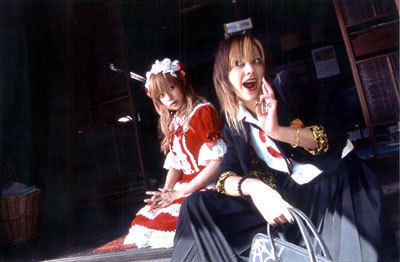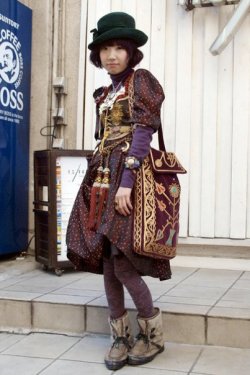I fear that my life among human beings has hit a slight
snag. I have not one but two weddings to attend this fall. One is on Sunday and I
am having a hard time navigating social norms in terms of dress while still being true to my
personal style.
I have been to weddings, of course, but it's been years since I was at a wedding where I had any say in what I wore. The last two weddings I went to had dress code information given to me. I was to wear a bunad to one of them and a black dress to the other. As a result, I have no recent memory whatsoever of what is considered normal in these sorts of social occasions.
And, because I'm me, a strange thing happened, which is the same thing that normally happens when I try to talk about social norms. Suddenly, I start talking like I'm an alien anthropologist trying to decipher the strange rituals of a particular tribe of another species.
___________________________________________________________________
Part the First: Contemporaries
Me: I am confused. How does one clothe one's naked body in order to attend the hu-man* ritual called "wedding"?
College friend: Depends on the ritual. What type of hu-man are participating?
Me: The type of hu-man who are friends with one [name of groom] are participating in the ritual. Unfortunately, I possess only limited knowledge of the moral code known as "normal" in the Murrikan^ tribe of the hu-man species.
College friend: I suggest a kilt like apparatus so as to blend with the indigenous tribe, though camouflaging may be required so as to mask your operations of the ritual.
Me: I have heard that, in the Murrikan tribe, these garments are often decorated with images of the genitals of local plant life. Is this so?
College friend: I am unfamiliar with the exact practices of this tribe, but I believe this may be a good hypothesis.
Me: It would make sense, given that this "wedding," I am given to understand, is at least in part a fertility rite. Perhaps I shall test this hypothesis about the decoration of native Murrikan kilt-like garments.
___________________________________________________________________
Part the Second: Parental Beings
Me:
I am confused. What does one
clothe oneself with in order to attend the hu-man ritual called
"wedding"?
Father: Nothing.
Father: Nothing.
Me: We are not on Betazed. I fear that would be inappropriate in the Murrikan culture.
___________________________________________________________________
Notes:
* Pronounced \‘hü-mȯn\
^ Pronounced \‘mər-i-kin\





